Step inside Sheffield's secret museum of skeletons, reptiles and other curiosities
and live on Freeview channel 276
This is the wonderful and occasionally frightening world of the Alfred Denny Museum.
Never heard of it? No surprise, it’s not exactly the most obvious museum, hidden away in Sheffield University’s Alfred Denny Building on Western Bank.
Our host is Dr Nicola Hemmings, the museum’s public engagement officer and research fellow in the department of animal and plant science, which is where this Zoological museum is housed.
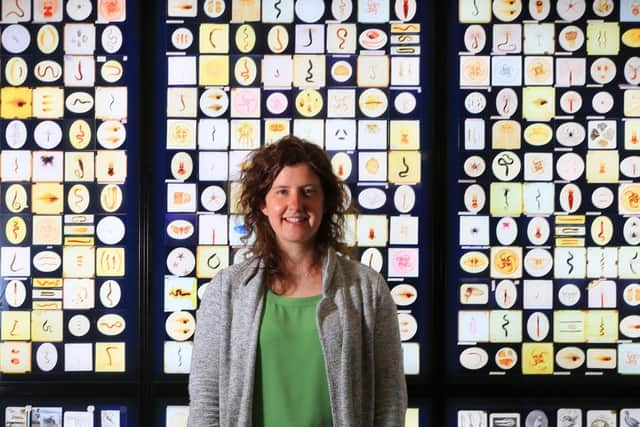

“It is a very well kept and excellent secret,” she says, smiling.
Her hope is simple. “That more people will learn about it.”
So let’s do this. Alfred Denny was the first professor of Biology at the university when it was established in 1905.
“He created the museum as a teaching resource because he was really interested in the classification and ordering of animal groups,” says Dr Hemmings.
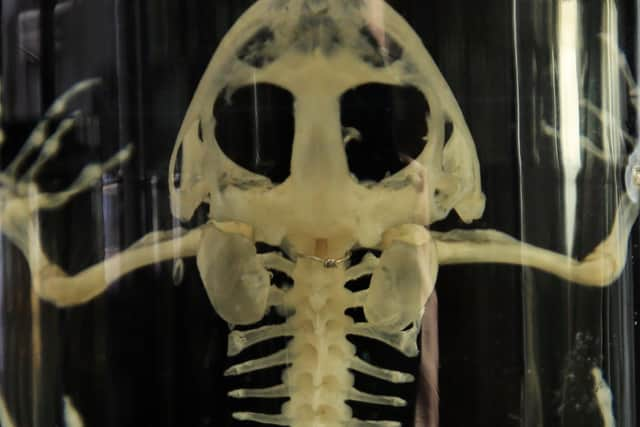

“The public couldn’t see it, but it was a museum in that it housed collections of specimens.”
It is small. One room in fact, but they do a lot with it.
Six central glass cabinets represent a major group of animals. Three cases of mammals, another of amphibians and reptiles, one of birds and the final one of fish.
Around the edges are glass wall cabinets full of invertebrates. There’s also drawers and cabinets which hide more wonders, including moths and butterflies collected by Arthur Doncaster, an amazing man who lived in Sheffield in the 1800s.
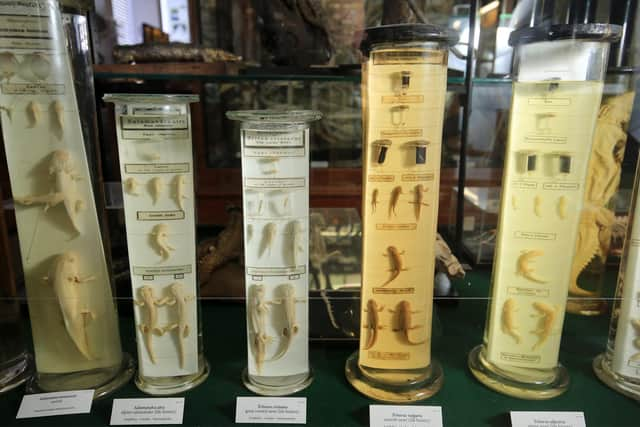

He was born deaf and unable to speak but overcame this to become one of the most respected butterfly and moth experts in the world.
There are thousands of exhibits and it is quite amazing. “It is cramped, with so much closeted into tight spaces,” says Dr Hemmings.
The museum was first housed in Firth Court across three floors. “Apparently at some point there was a giraffe, with his head in the third floor and legs on the ground floor. I don’t know where it ended up!”
The origin of the specimens is sadly unknown as the museum's records were lost when Sheffield was bombed in World War 2. But there are some bits of information.
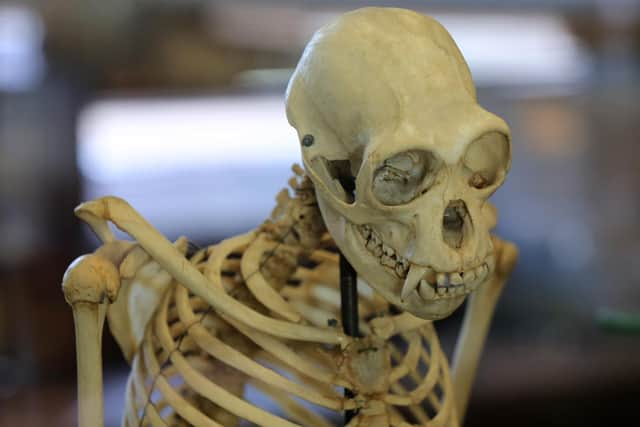

“ We know there was at least one private zoo in Sheffield in the late 1800s, and when animals died they were either given to, or bought by, the university,” says Dr Hemmings.
“We also know that the museum purchased specimens from specialist companies. During the early 20th century there were companies that obtained, prepared and sold specimens to museums.”
Some specimens were donated by people including Henry Seebohn, a successful Sheffield businessman in the 19th Century, who had a steelworks near Blonk Street by the river.
He was also an amateur ornithologist and went on major expeditions, including to Siberia where – like many other European ornithologists of his day – he collected native fauna as specimens and brought them back to the UK.
Space issues forced the museum to move down the road in the 1950s. “We have still got some original exhibits, primate and human skeletons, which came over in cabinets. They are now the six central cabinets.”
The museum opened to the public in 2012, when then curator Professor Tim Birkhead decided it was time to reveal what had been shut away from the world.
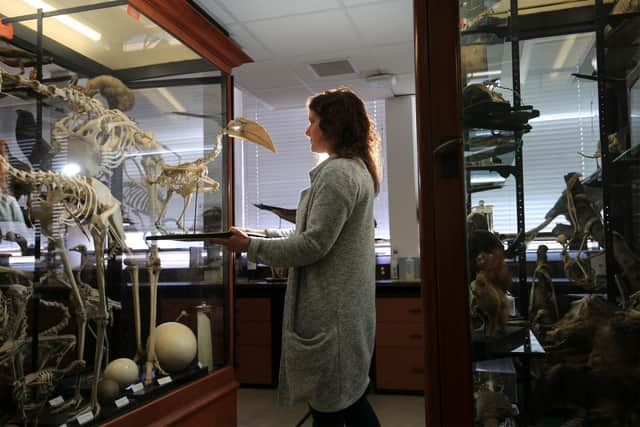

The locked wooden doors which gave the impression of a cupboard were replaced with glass, thanks to the Festival of the Mind, the university event designed to bring research to life.
This was when Nicola got involved and prior to the pandemic, 25 people at a time could tour the exhibits, on the first Saturday of each month. Three tours of an hour were given, hosted by undergraduates trained by Nicola.
Asked to name the weirdest exhibit, she goes for the aptly named Terror Bird, a prehistoric flightless bird-of-prey. “Imagine an eagle, one-and-a-half times bigger than a human, prowling around on its back feet, looking for things to eat.”
Apparently it could eat a small deer and at some point, a replica eye was painted on in a fiery red colour, making it even scarier.
Her favourite exhibit is at the back of a room, a porpoise. One half shows the outside of its body, the other half is the skeleton. It was brought to the museum by then curator Oskar Lusis, a refugee from Latvia who got the job in the 1940s.
“He was contacted by the fish market in Sheffield, saying they had a massive fish and would he like to see it.
“He went down and realised it wasn’t a fish, but was a porpoise and the question was how to get it back to the university.
“There are two versions of how it happened. One is that he got a wheelbarrow and wheeled it back. The other is that he took it on the bus. Whichever is true, he used it and prepared it as a half and half specimen.”
Nicola is a big fan. “He did so much for the museum, he made and contributed so much. A really accomplished taxidermist, there are also lots of records of students saying he was a great teacher, a fountain of knowledge and really well loved.”
There’s also an illuminated display called Wonder, rows of glass lantern slides which show marine organisms.
At first they look like sections of these organisms, but on closer inspection you realise they are whole thanks to a technique perfected by Henry Clifton Sorby, a geologist at the university in the 1800s.
Put simply, he carefully squashed a whole specimen, keeping every detail intact, so it can be seen on the slide. He was the only person in the university able to do this, giving it a visually striking resource.
The museum closed to the public in March 2020 and it is not yet known when it will reopen due to ventilation issues.
Some of the displays have been given the digital treatment, so specimens of vertibrates can be seen as photos online.
And the displays are checked. Dr Hemmings said: “On a regular basis, we’ve had people in the department coming in and checking the displays.”
That’s because it is used as a teaching facility, with students allowed in one at a time. They will be studying Taxonomy, the branch of science concerned with classification, especially of organisms, as part of a Biology or Zoology degree.
London-born Dr Hemmings came to Sheffield in 2003 to study Zoology. She graduated in 2007, did a Phd in the same department and stayed on as a researcher.
She also met her husband here and loves the city. The mum-of-two says: “It has the best of both worlds, a city with amazing nature, perfect for me.”
So no wonder she wants to sell the museum’s wonders. “The Alfred Denny Museum is like no other you will ever visit.
“It is not just a Zoology museum, it’s almost a history museum, which can provide you with an insight into how Zoological museum were in the 1800s.”
Like a trip back in time almost? “The way we’ve kept them laid out and displayed is exactly how it would have been in those times.
“And because we use it for teaching purposes it is done in a way where you see the anatomy of a species.
“Most museums now show how animals live in their environment, like a wolf hunting. We don’t do that. We present specimens so you can understand the animal’s anatomy, like how the body is put together.”
“Zoological museums like this allow us to learn about animal diversity – we have representatives of all the major animal groups – and the internal structures of these animals.
“They also give us a unique insight into the past, in that they are themselves historic, allowing us to see how museums have displayed their specimens through time, so for example the Alfred Denny is a typical Victorian teaching museum.
“Also, specimens collected in previous eras can provide a unique window to the past. Bird eggs provide a good example of this.
“Dated egg specimens were invaluable in showing the disastrous results of pesticides in the 1960s-80s, disrupting birds' physiology and leading them to produce thin-shelled eggs.
“A comparison of museum eggs before and after pesticide use - DDT was banned in the UK in the 70s - shows the thinning and recovery of eggs.
Dr Hemmings, who lives in Holmfirth, finishes with a flourish.
“The concentration of different types of animals in a condensed space will blow your mind.
“You’ve also got the opportunity to listen and talk to someone who is studying this subject in great depth, who knows so much and can answer your questions.”
Let’s hope that happens soon because prior to the pandemic it had hosted more than 4,000 visitors a year through a programme of public tours, festival events and school outreach activities.
Meanwhile the museum, which is funded by the Royal Society, has an online collection at www.admuseumguide.weebly.com